The hummingbird moth belongs to the genus of sphinx moths Hemaris, in the family Sphingida. While in the garden, individuals can easily mistake the familiar humming sound of these moths in flight for bumblebees or hummingbirds. Hummingbird moths beat their wings rapidly and hover over flowers to collect nectar. This moth looks almost identical to a hummingbird or bumblebee at first glance, but after you take a closer look, you will notice it is, in fact, a moth.
In this post, I would like to share a few photographs of a hummingbird moth visiting my flower gardens and some information about these moths to help you identify them. The next time you are out in the garden, I hope you will be able to distinguish between the hummingbird, bumblebee, and hummingbird moth.
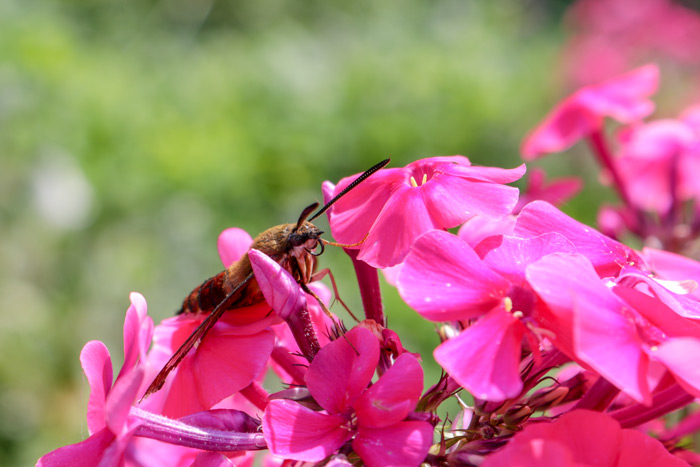
Hummingbird moths are also called hawk moths, sphinx moths, clearwing moths, bee moths, and bee-hawk moths. In their caterpillar stage, they are called hornworms.
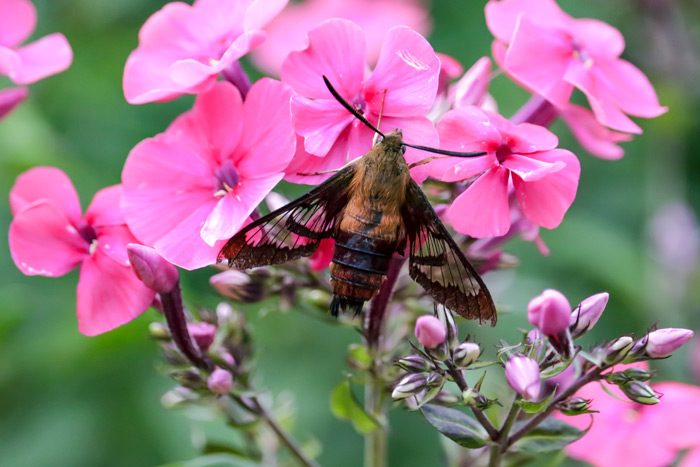
Hummingbird moths have plump barrel-shaped bodies that are covered by a thick coat of fur and have short tails that open into a fan. Individuals’ coloration will significantly differ in variation. Often, the back side of the moth is olive to golden-olive in color on the thorax and burgundy to black with light olive to dark golden patches on the abdomen. The underside will be white to yellow on the thorax and burgundy to black on the abdomen. Their wings are covered by scales and as some species begin to fly, they will lose many of these scales from patches on their wings, leaving a mostly clearwing with reddish-brown borders and veins. The antennae are thicker at their base and are curved at the ends. They have six legs that often dangle as they fly and feed.

The hummingbird moth beats its wings quite rapidly and has a general wingspan of 4 to 5.5 centimeters. These moths have the ability to beat their wings almost as fast as hummingbirds at 70 beats per second and hover above flowers while searching for nectar. It can also fly up to 12 miles per hour, which is slower than a hummingbird but still noticeably fast in a flower garden. They can hover, fly sideways or fly backward.
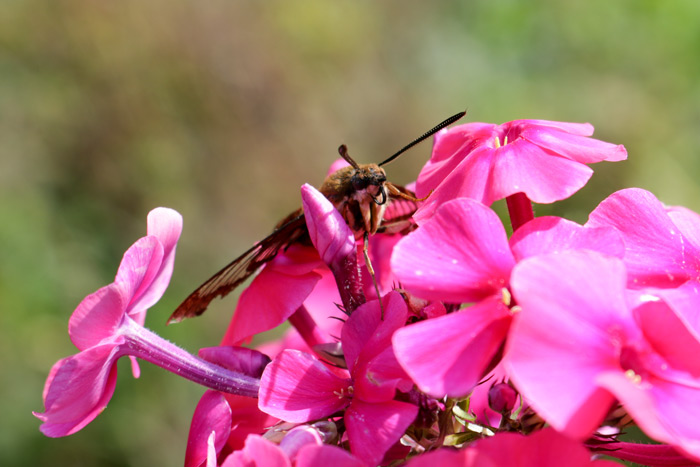
The hummingbird moth can be found in second-growth forests, meadows, and generally in gardens and suburbs.
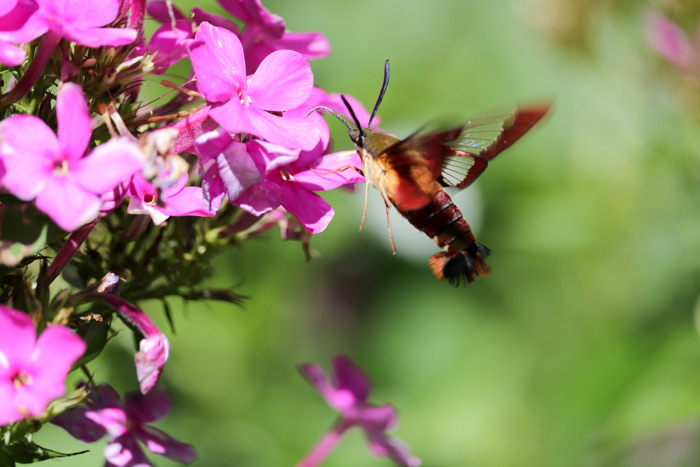
Hummingbird moths have long tongues called proboscis or haustellum, that are curled up when the moth is not feeding.
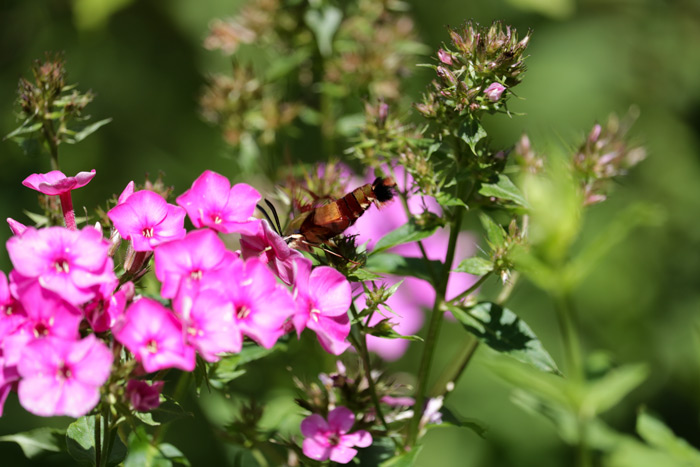
The hummingbird moth seeks out nectar from many plants such as bee balm Monarda, phlox Polemoniaceae, honeysuckle Caprifoliaceae and verbena Verbenaceae. Some species are diurnal, meaning you will see them feeding during the day, particularly at dawn and dusk.
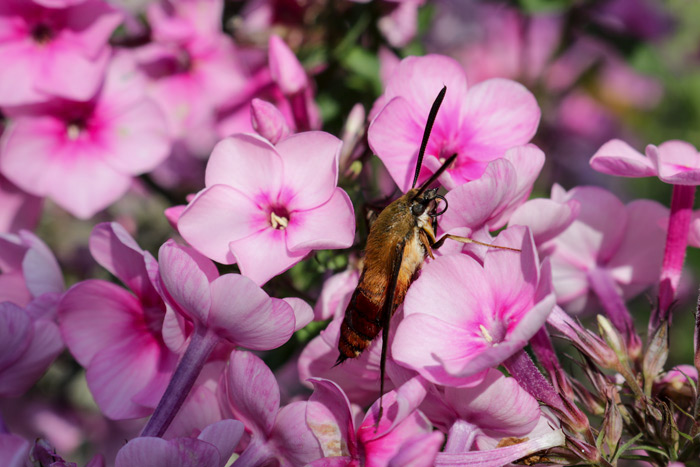
Hummingbird moths tend not to fly away when approached. Every summer, while I’m out photographing these moths, I like to hold my hand out over them in order to feel the rapid beating of their wings. They don’t seem to mind my touch, as they are focused and busy flying from flower to flower.
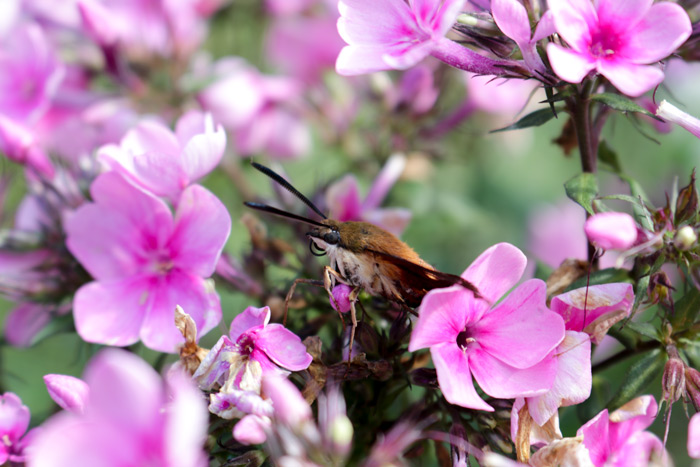
Hummingbird moths are abundant in the summer months. They are a migratory species and capable of traveling long distances. These moths are found in a large portion of North America, ranging from Alaska to Oregon in the west and from Newfoundland to Florida in the east.
So cool Laura!!! I have always wanted to see one of these guys – some day I hope 🙂
Hi Kerri, Thank you. I’ve noticed they really enjoy feeding from the phlox in the garden. I hope you get to see one as well and I look forward to seeing your photographs!
I just got to see a hummingbird moth for the first time such a beautiful little thing I have so many hummingbirds. These are like little woolly mammoth flying around little furball.